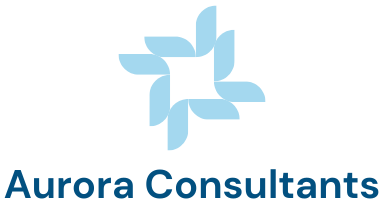A lot of Canadians look to the United States for exciting opportunities, regardless in terms of career advancement, educational pursuits, or a change of scenery. The strong cultural ties and proximity make the move appealing, but maneuvering through the complex landscape of work visas can be daunting. For Canadians, comprehending the various types of work visas available, together with the application processes and requirements, is essential for a smooth transition into the American workforce.
In this examination of USA work visa options for Canadians, we will delve into the key visa categories that are commonly utilized, such as the TN visa under the USMCA and H-1B visas for specialty occupations. Knowing which visa matches your professional background and goals is vital, as it can significantly influence job opportunities and career development in the United States. With the right information and preparation, Canadians can effectively overcome challenges related to work visas and embark on fulfilling careers in the U.S..
Types of Work Visas for Canadians
Canadians have multiple options when it comes to acquiring a work visa in the U.S.. One of the most notable is the TN visa, which was created under the North American Free Trade Agreement. This visa permits qualified Canadian professionals to work in designated occupations, such as engineering, accounting, and healthcare, free from employer sponsorship. The TN visa is renewable indefinitely as long as the employment and credentials remain valid, making it a preferred choice for many Canadians.
An alternative is the H-1B classification, intended for specialty occupations requiring expert knowledge and at least a bachelor’s degree. Canadians can seek this visa through an American employer who must support their application. The H-1B visa has a cap on the number issued each year, resulting in a lottery system for applicants. This renders the H-1B visa more competitive compared to the TN visa, and Canadians pursuing this option should be prepared to handle its challenges.
In conclusion, the L-1 visa is available for Canadians who work for global companies and are being transferred to the U.S. branch. This visa has two subcategories: L-1A for managers and senior leaders, and L-1B for employees with specific knowledge. The L-1 visa enables Canadian employees to remain employed for their employer in the U.S., facilitating global business operations. It provides a route for Canadians in management positions to advance their careers while growing their company’s presence across international markets.
Application Process Overview
The application process for a USA work visa for Canadians can at first seem daunting, but it can be handled with meticulous planning and organization. Initially, prospective applicants need to identify the appropriate visa type for their specific employment situation. Common options include the H-1B visa for specialty occupations, the L-1 visa for intra-company transferees, and the TN visa available under the US-Mexico-Canada Agreement. Understanding the requirements and characteristics of each visa category is essential for a positive application.
Once the right visa type is chosen, applicants must collect the necessary documentation. This generally includes a job offer letter from a United States employer, proof of qualifications such as educational qualifications or certifications, and any pertinent supporting documents that validate the job position and the applicant’s eligibility. The employer typically plays a key role in this step, especially for work visas that require employer sponsorship, making it essential for both parties to communicate effectively throughout the process.
After collecting all required materials, the next step is to send the application to the appropriate authorities. This usually involves filling out the required forms, submitting supporting documentation, and paying any related fees. For some visa types, an interview at a U.S. embassy or consulate may also be necessary. Following submission, applicants should be prepared for a potential wait as the application is processed, and they should remain in contact with their employer and legal advisors to handle any questions or further requests from immigration authorities.
Common Obstacles and Answers
Steering through the United States work permit landscape can be a overwhelming journey for Canadian citizens. One of the key issues is grasping the particular criteria for distinct visa types, such as H1B, L-1, and TN visas. Each type has its own eligibility criteria, application processes, and document requirements. This complexity can lead to confusion and may result in holdups or rejections of applications. To alleviate this, Canadian applicants should consult from immigration experts or utilize government resources to ensure they have a thorough knowledge of the regulations for their individual case.
Another significant hurdle is the challenging nature of the job market in the U.S.. Even if a Canadian successfully gains a visa, they may face obstacles in securing a job due to intense rivalry from competing candidates, including candidates already in the United States. Networking can be crucial in overcoming this obstacle. Canadians should leverage professional platforms, participate in industry conferences, and connect with prospective employers to enhance their visibility and chances of employment. Additionally, tailoring resumes and cover letters to fit U.S. standards can help make applications more appealing.
Finally, timeframes for processing for employment visas can be variable, sometimes taking several months. This uncertainty can complicate job offers and moving plans. To address this issue, Canadians should submit applications as early as possible and follow up regularly on the state of their visa applications. Organizations that provide expedited processing options can accelerate the processing for some visa categories, which may be beneficial for those needing speedy outcomes. Being vigilant and orderly during the application process can minimize stress and ensure a easier transition to job in the U.S..
Professional Work Visa USA
